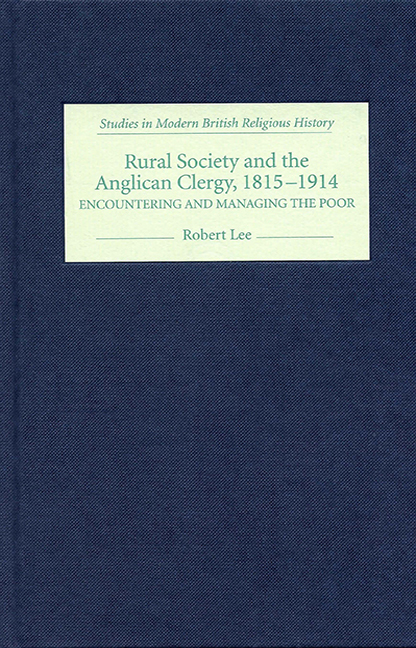Preface
Published online by Cambridge University Press: 11 May 2017
Summary
The origins of this book lay in a desire to explore the social, cultural and political tensions in nineteenth-century rural communities, and to understand the part played by the Church of England clergy in creating, exacerbating or soothing those tensions. Clergymen had their most direct impact on the lives of the labouring poor in their secondary roles – as landowners, magistrates, Poor Law guardians, school governors and charity administrators – and it is as secular rather than religious figures that they are appraised in this book.
Qualitative and quantitative research methods are combined in this study in an attempt to understand, in the most rounded way possible, the extent to which Anglican clergymen shaped the lives and prospects of their parishioners and influenced the economic and political destinies of their parishes. Autobiographies, pamphlets, sermons, letters to the press, evidence to Parliamentary commissions: all give direct access to the thoughts and opinions of these men. More oblique – but equally significant – is the evidence of poll books, of Petty and Quarter Sessions records, of Poor Law guardians’ minute books and of school governors’ meetings. There is evidence, too, that suggests itself only as a presence in the landscape, and the visual impact of the restored and Gothicised parish church is considered alongside that of the humble Nonconformist wayside bethel.
Structurally, the book is separated into two conceptual halves: a first part that deals with ‘Encountering the Poor’ and a second that deals with ‘Managing the Poor’. The division between these two parts is not intended to be rigid, but to suggest a presumptive view that the clergyman stood in an authoritarian relationship to his parishioners, interacting with them across a gulf in social experience and cultural understanding. How far this presumption is justified is the constant, implicit question of the text.
The work is centred predominantly upon Norfolk's rural parishes, the exact number of which has proved surprisingly difficult to pin down. Boundary changes, unifications, consolidations and rationalisations throughout the study period gave a quite fluid identity to some parishes, over and above those natural processes of demographic change that had already sent a number of the parishes of the medieval landscape into terminal decline. Ultimately a value judgement had to be made about which parishes to omit from any systematic survey.
- Type
- Chapter
- Information
- Rural Society and the Anglican Clergy, 1815–1914Encountering and Managing the Poor, pp. ix - xiPublisher: Boydell & BrewerPrint publication year: 2006

